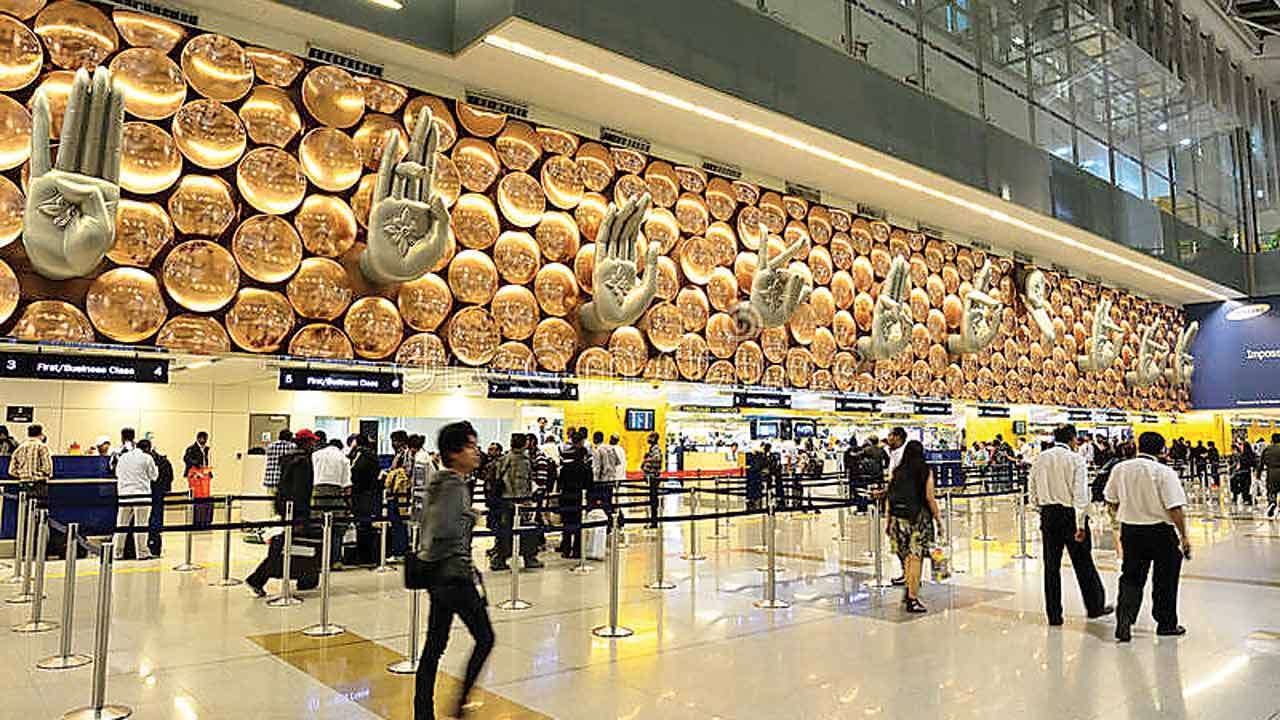Canada’s tougher visa policies have hit Indian students harder than ever before. Recent government data shows that nearly three out of every four Indian student visa applications were rejected in August 2025 — the highest refusal rate of any major country.
The 74% rejection rate is a dramatic increase compared to just 32% two years ago, in August 2023. The figures highlight how Canada’s new cap on study permits, strict financial requirements, and enhanced verification systems have reshaped the future of Indian students hoping to study there.
A Sharp Drop in Indian Applications
The new visa rules have caused a steep fall in the number of Indian students applying to Canadian institutions. In August 2023, Indian students submitted nearly 21,000 study permit applications. This year, the number dropped to just 4,500.
While the overall global rejection rate for student visas is around 40%, India’s stands out as the highest among all major source countries. By comparison, applications from China were rejected at a much lower rate of 24% in the same month.
For the first time in over a decade, Canada’s education system — which relied heavily on students from India — is seeing a major decline in enrolments.
Why Are So Many Indian Students Being Rejected?
There are several reasons behind this sudden rise in rejections. The Canadian government has rolled out a series of new policies over the past two years to tighten its student visa process and reduce fraud.
1. Crackdown on Fake College Letters
In 2023, authorities uncovered a major fraud ring involving over 1,500 fake college admission letters, most of which came from India. This discovery led to stricter background checks.
In 2024 and 2025, Canada introduced a mandatory acceptance letter verification system to ensure that every document submitted by students is genuine. So far, more than 14,000 suspicious letters have been flagged under this new process.
2. A Cap on Student Permits
To manage the rapid rise in student numbers and its impact on housing and public services, Canada introduced a national cap on study permits in 2024, followed by an additional 10% cut in 2025.
This means fewer spots are available for international students overall — and competition has become much tougher.
3. Higher Financial Proof Requirements
To prove they can afford to live and study in Canada, students now need to show a much higher amount of savings than before. The proof-of-funds requirement has almost doubled to reflect the country’s high cost of living.
4. Closer Monitoring of Student Compliance
In October 2025, immigration officials revealed that around 47,000 foreign students, including thousands from India, might be staying in Canada illegally after their study permits expired or after failing to meet academic conditions.
This revelation prompted even tighter screening for new applicants, as Canada seeks to prevent further misuse of study visas.
Impact on Indian Students
For many Indian families, Canada has long been the dream destination for higher education — offering top-ranked universities, cultural diversity, and clear paths to permanent residency. But that dream is becoming harder to achieve.
The sudden spike in visa refusals has left thousands of hopeful students disappointed and uncertain. Many have already paid tuition deposits, completed language tests, and spent months preparing their applications. Now, they’re being forced to consider alternatives like Germany, Australia, or the UK, where visa processing remains more flexible.
Education agents in India report that interest in Canada has dropped significantly. “Earlier, nine out of ten students wanted to apply to Canada. Now, barely half even consider it,” said one consultant in Delhi.
What This Means for Canadian Colleges
The visa crackdown is also affecting colleges and universities across Canada. Many institutions — especially smaller community colleges and private career schools — depend heavily on international students for revenue.
With applications from India plummeting, several institutions are reporting major declines in enrolment. Some worry this could lead to financial strain or even campus closures in the future.
While educators agree that fraud must be addressed, some argue that the new system is overly strict and may drive away talented, genuine students who bring diversity and funding to Canada’s classrooms.
Canada’s Explanation: Protecting Integrity
According to Immigration, Refugees and Citizenship Canada (IRCC), these tougher measures are meant to protect the integrity of the education and immigration system. Officials say fake admissions, misrepresentation, and misuse of study permits must be stopped.
“Canada has implemented enhanced verification and increased financial requirements to ensure that only genuine students are admitted,” an IRCC spokesperson said.
The government insists that genuine applicants still have a fair chance — but the process is now far more selective and evidence-based than before.
India Responds to the Rising Rejections
The Indian High Commission in Ottawa has acknowledged the growing rejection rate but said visa decisions ultimately lie with Canada.
In a statement, the embassy emphasized that Indian students have a long history of contributing to Canada’s academic and economic success.
“Some of the best students in the world come from India, and Canadian institutions have greatly benefited from their talent and excellence,” the statement said, urging both governments to maintain open communication to resolve visa-related issues.
Diplomatic Tensions Add to the Complexity
The surge in visa rejections also comes against the backdrop of lingering diplomatic tensions between India and Canada. Relations between the two countries cooled sharply in 2023 after former Prime Minister Justin Trudeau accused India of involvement in the killing of a Canadian citizen — a claim India firmly denied.
Though both sides have since taken steps to restore normalcy, observers believe the strained relationship has indirectly influenced policy attitudes on both sides, including student mobility and immigration.
The Permanent Residency Pathway
Despite the decline in student visas, many who are already in Canada continue to transition to permanent residency (PR). Between January and August 2025, over 139,000 temporary residents — about half of all new PRs — gained permanent status.
According to IRCC, these individuals are often ideal candidates because they already have a Canadian education, work experience, and language proficiency. Most qualify through the Express Entry system or the Provincial Nominee Program (PNP), which prioritize skills aligned with Canada’s labor market needs.
Concerns About Students Staying Illegally
However, the Canadian government remains concerned about non-compliance among international students. Officials estimate that up to 47,000 former students may be staying illegally in the country — some because they overstayed their visas, and others because they stopped studying without notifying authorities.
Aiesha Zafar, head of migration integrity at IRCC, told a parliamentary committee that many of these cases are under review. Some institutions have lost contact with international students who have disappeared from campus, prompting investigations by the Canada Border Services Agency (CBSA).
Why Canada Is Taking a Harder Line
Canada’s immigration department argues that while international students are vital to the economy, uncontrolled inflows have put pressure on housing, healthcare, and local infrastructure.
In recent years, many students have arrived through unregulated or low-quality private colleges, often with promises of permanent residency that don’t materialize. This has led to reports of exploitation and overcrowding, prompting calls for reform.
The government’s new approach focuses on sustainability — admitting fewer students but ensuring better oversight and quality.
The Road Ahead for Indian Students
Experts say Indian students planning to apply for a Canadian study permit must now be far more careful. Here are some important steps to improve their chances:
- Verify Your Offer Letter: Ensure the college is a government-approved Designated Learning Institution (DLI).
- Be Transparent About Finances: Clearly show the source of funds — bank statements, income proof, or scholarships.
- Write a Clear Statement of Purpose: Explain how your studies connect to your career goals.
- Avoid Dubious Agents: Always use authorized education consultants and never rely on fake documents.
- Apply Early and Be Patient: Given the delays and stricter checks, early applications improve the odds.
Global Impact of Canada’s Visa Crackdown
Canada’s tough stance has created ripples across the global education market. Competing countries like Germany, Australia, and the United Kingdom are seeing a surge in Indian applications.
Experts believe that if Canada continues to restrict entry, other nations could quickly fill the gap — benefiting from the pool of high-quality students who once considered Canada their top choice.
Balancing Integrity and Opportunity
Canada’s new visa regime represents a major shift — from an open-door policy to a system that prioritizes quality control and verification. For Indian students, this means studying in Canada is still possible, but it now requires far more diligence, preparation, and authenticity.
While the country’s crackdown aims to protect its education system, it also underscores a delicate balance: maintaining public trust while keeping Canada a welcoming destination for genuine learners.
The message from Ottawa is clear — Canada still wants international students, but only those who play by the rules.










